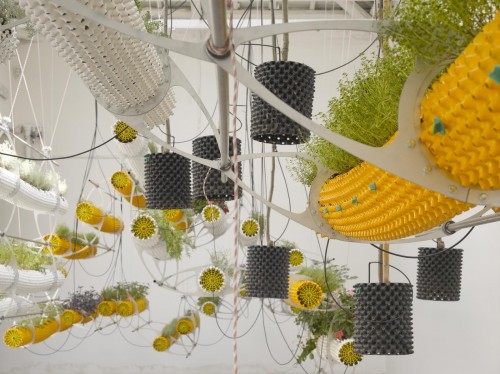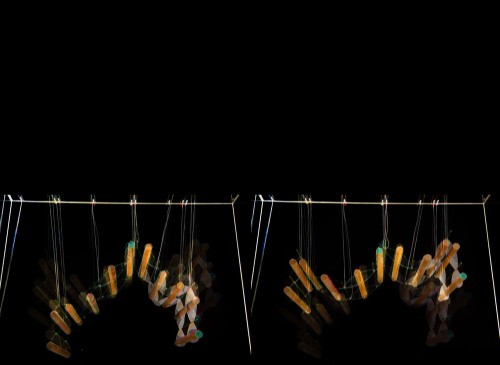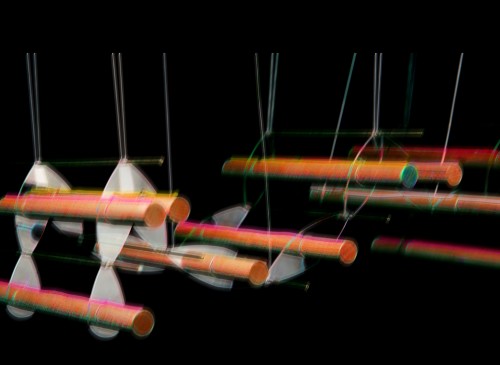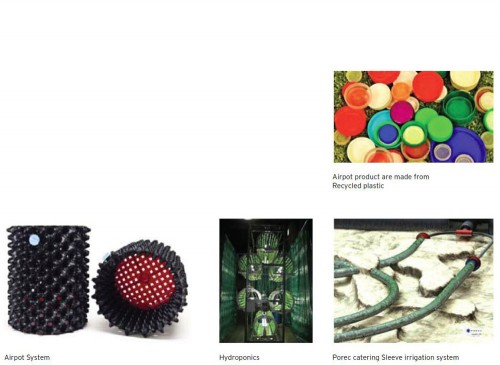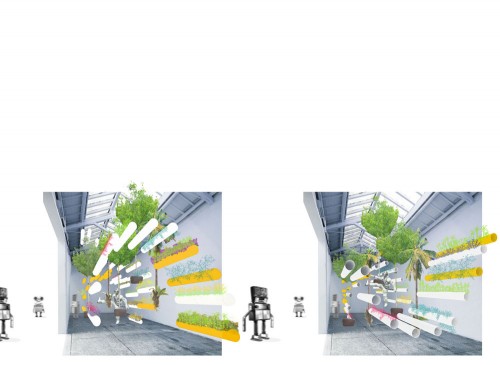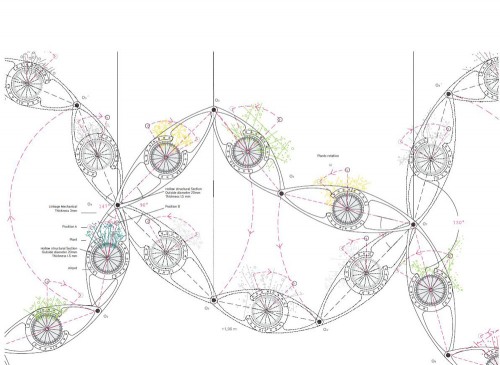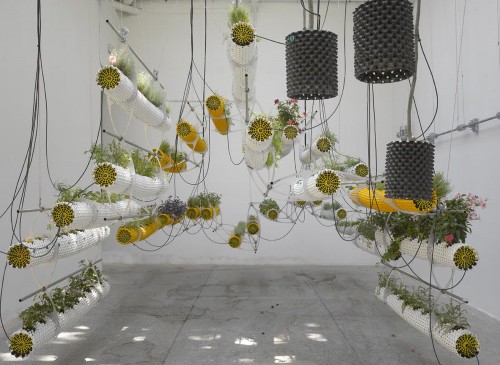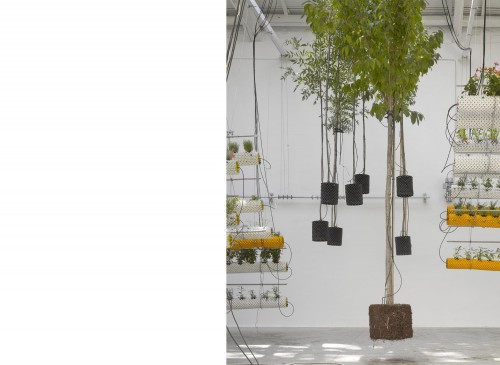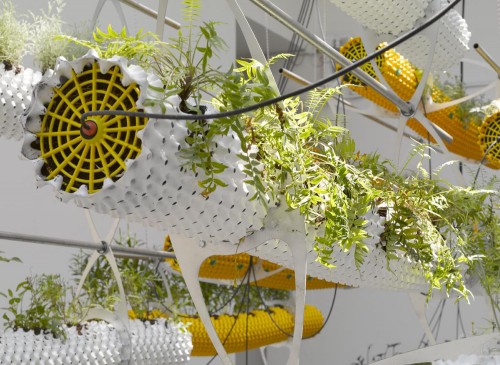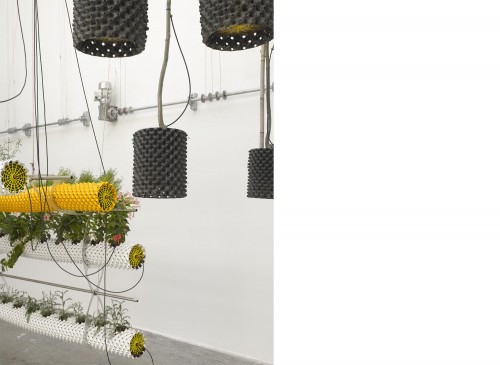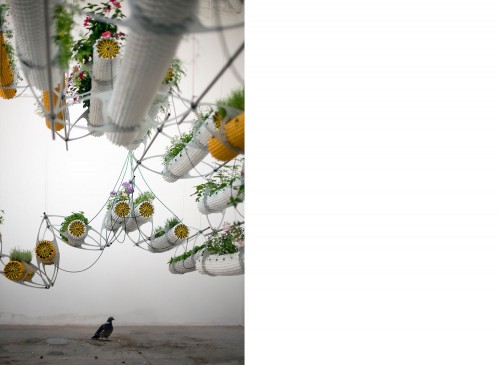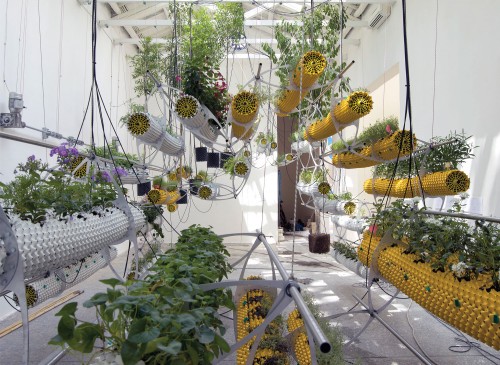selgascano
Al aire (between air)
This living installation, muttered about a long time ago and finally driven forwards by the Biennale de Venezia, is the beginning of an architectural and biological laboratory which involves the recording of data, adaptations, modifications and conclusions. It represents a firm intention and a real expectation of broadening our way of seeing and perceiving the behaviour of Nature, of erasing that part of our memory, fixed as an innate idea, about where and how Nature developed, adding new possibilities so that it recovers part of the large amount that it has already lost and the large amount that it will continue to lose as a result of ourcontinuous invasion of its territory.
Perhaps everything began with the study of some research by the NASA into the growth of seeds in zero gravity, when we became intrigued by a photograph of an unexpected tropism which affected moss seeds in space. That movement caused their growth to spiral in all directions, although normally, in microgravity, most plants grow randomly in various directions.
Perhaps because Nature is what remains the most unalterable by technology, the relationship between the two has always been unidirectional:technology has always been used to restore space to Nature. That caused the concept of the natural and that of the artificial to become incompatible and antonymous in our memories.
With these prototypes that we propose in the AL AIRE (betweenair) laboratory, we are trying to re-use existing technology and to provide new spaces, artifical ones, for the growth of Nature.
We say “re-use” because a lot of technology was born and has developed because of the shortage of land and the strong demand for food, which opened up new possibilities for the agro-alimentary world. But architecture, which is always a slow field, “too slow to innovate” in the words of Cedric Price, and in which everything arrives very slowly and late, has not yet adapted.
The technological advances that we gather from other fields are, first, the provision of air to roots – just as necessary as water – by newly-designed containers which allow the plant to develop in a reduced volume of substratum. The design of this new container favours the formation of roots and their ramification, achieving a high radicular density in a restricted volume. It must be emphasized that without air there is no radicular respiration, so there can be neither growth nor development.
Secondly, dissociating the idea of the planting of trees and bushes from the availability of large areas of land, and eliminating the idea of high yield through the use of various hydroponic techniques, much developed in horticulture, which allows cultivation without depending on soil. With an adaptation of these new techniques, now available on the market, we propose to use only air as the medium of
growth for Nature. Every part of space is usable, and when the weight is reduced to a minimum, there is also the possibility of mobility, which is perhaps the most important distinction of all.
Apart from a possible later use of the results in the world of architecture, we are also seeking botanical experimentation with the biological analysis of its growth due to the movement of the parts. For that we shall use a great variety of plants and trees to be able to analyze the aerial behaviour of each of them as much as possible.
At the end of the whole process, we think we may be able to provide some conclusions for an elastic architecture, modifiable continually to adapt itself to the changing conditions which surround us. Price called it “Anticipatory Architecture”, an impermanent architecture designed for continuous changes. Or perhaps, on the contrary, we shall get closer by returning to what Raimund Abraham called an “Elemental Architecture”. But, in any case, it is a question of trying something which, starting from what is very recognizable and alive, succeeds in changing our thinking somewhat in order to provide other ways of looking at everything that surrounds us.
selgascano, architects & josepselga, biologist

